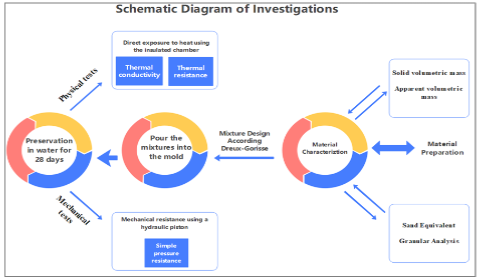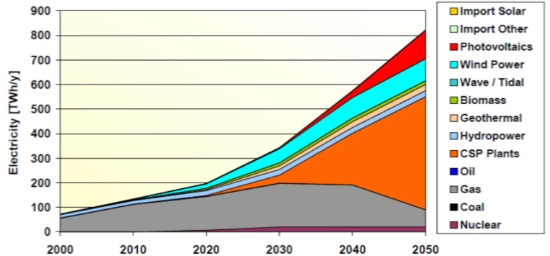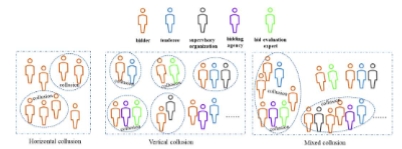Comprehensive seismic loss model of Tehran, Iran in the case of Mosha fault seismic scenario using stochastic finite-fault method
Abstract
This paper presents the results of a study carried out to assess probable seismic loss in terms of damage to the residential buildings and the number of fatalities in the case of the Mosha Fault seismic scenario in Tehran, Iran. Accordingly, seismic risk components (including seismic hazards, exposure models, and fragility curves) are evaluated. The stochastic finite-fault method with dynamic corner frequency is applied for quantifying ground motion values. The results show that PGA on the soil surface could range between 0.1 g and 0.45 g. Then, a reliable model of building exposure by analyzing census data from Tehran is compiled. This model included 19 different classes of buildings and is used to evaluate the potential damage to buildings from seismic scenarios. The results indicate that the median damage ratio from 100,000 iterations for the whole of the city is about 6% ± 1.54%. The study found that the central and eastern parts of Tehran are the most vulnerable areas, with an estimated 15,952 residents at risk of losing their lives in this scenario. This is equivalent to 0.2 percent of the total population of Tehran. The findings from this study can be used by local authorities to provide appropriate emergency response and preparedness plans in the case of the Mosha Fault seismic scenario.
References
[1]Tchalenko JS, Braud J, Berberian M. Discovery of three earthquake faults in Iran. Nature. 1974; 248(5450): 661-663. doi: 10.1038/248661a0
[2]Jackson J, McKenzie D. Active tectonics of the Alpine--Himalayan Belt between western Turkey and Pakistan. Geophysical Journal International. 1984; 77(1): 185-264. doi: 10.1111/j.1365-246x.1984.tb01931.x
[3]Statistical Centre of Iran (SCI), Statistical Centre of Iran, Vice-Presidency for Strategic Planning and Supervision. National Census of Population and Housing Techical Reports, Sarshomāri 2016 (1395), 2011 (1390), 2006 (1385), 1996 (1375), 1986 (1365), and 1976 (1355): Tehran. formerly, the Plan & Budget Organization of the Imperial Government of Iran, Statistical Centre; 2016.
[4]Berberian M. Contribution to the Seismotectonics of Iran II. Ministry of Industry and Mines; 1976.
[5]Moinfar A, Mahdavian A, Maleki E. Historical and Instrumental Earthquake Data Collection of Iran. Publication Iranian Culture. Affairs Inst, Tehran; 1994. p. 446.
[6]Jalalalhosseini SM, Zafarani H, Zare M. Time-dependent seismic hazard analysis for the Greater Tehran and surrounding areas. Journal of Seismology. 2017; 22(1): 187-215. doi: 10.1007/s10950-017-9699-4
[7]Berberian M, Yeats RS. Tehran: An earthquake time bomb. In: Sorkhabi R (editor). Tectonic Evolution, Collision, and Seismicity of Southwest Asia: In Honor of Manuel Berberian’s Forty-Five Years of Research Contributions. Geological Society of America; 2016. pp. 84.
[8]Firuzi E, Ansari A, Amini Hosseini K, et al. Probabilistic earthquake loss model for residential buildings in Tehran, Iran to quantify annualized earthquake loss. Bulletin of Earthquake Engineering. 2019; 17(5): 2383-2406. doi: 10.1007/s10518-019-00561-z
[9]Kalantari M, Firuzi E, Ahmadipour masoud, et al. Estimating Annualized Earthquake Loss for Residential Buildings in Tehran, Iran. Available online: https://assets-eu.researchsquare.com/files/rs-1685779/v1/3e963f1b-807a-4ae1-a30a-3d195a1db990.pdf?c=1697480440 (accessed on 2 January 2024).
[10]Firuzi E, Ansari A, Amini Hosseini K, Kheirkhah N. Developing an earthquake damaged-based multi-severity casualty method by using Monte Carlo simulation and fuzzy logic; case study: Mosha fault seismic scenario, Tehran, Iran. Stochastic Environmental Research and Risk Assessment. 2024; 38: 2019-2039. doi: 10.1007/s00477-024-02667-6
[11]De Martini PM, Hessami K, Pantosti D, et al. A geologic contribution to the evaluation of the seismic potential of the Kahrizak fault (Tehran, Iran). Tectonophysics. 1998; 287(1-4): 187-199. doi: 10.1016/s0040-1951(98)80068-1
[12]Nazari H, Ritz JF, Salamati R, et al. Morphological and palaeoseismological analysis along the Taleghan fault (Central Alborz, Iran). Geophysical Journal International. 2009; 178(2): 1028-1041. doi: 10.1111/j.1365-246x.2009.04173.x
[13]Ritz JF, Nazari H, Balescu S, et al. Paleoearthquakes of the past 30,000 years along the North Tehran Fault (Iran). Journal of Geophysical Research: Solid Earth. 2012; 117(B6). doi: 10.1029/2012jb009147
[14]Ambraseys NN, Melville CP. A History of Persian Earthquakes. Cambridge University Press; 1982. p. 219.
[15]Berberian M, Yeats RS. Patterns of historical earthquake rupture in the Iranian Plateau. Bulletin of the Seismological Society of America. 1999; 89(1): 120-139. doi: 10.1785/bssa0890010120
[16]Japan International Cooperation Agency (JICA). The Study on Seismic Microzoning of the Greater Tehran Area in the Islamic Republic of Iran, Final Report, Japan International Cooperation Agency (JICA), Centre for Earthquake and Environmental Studies of Tehran (CEST) Tehran Municipality; 2000.
[17]Beresnev IA. Source Parameters of Earthquakes in Eastern and Western North America Based on Finite-Fault Modeling. Bulletin of the Seismological Society of America. 2002; 92(2): 695-710. doi: 10.1785/0120010101
[18]Zafarani H, Noorzad A, Ansari A, et al. Stochastic modeling of Iranian earthquakes and estimation of ground motion for future earthquakes in Greater Tehran. Soil Dynamics and Earthquake Engineering. 2009; 29(4): 722-741. doi: 10.1016/j.soildyn.2008.08.002
[19]Saffari H, Roohafzayan A, Mahdavian A, Yari M. Stochastic Finite Fault Modeling and Simulation of Strong Ground Motion of Mosha Fault in Iran. Electronic Journal of Structural Engineering. 2020; 20: 63-71. doi: 10.56748/ejse.20247
[20]Yu R, Song Y, Guo X, et al. Seismic hazard analysis for engineering sites based on the stochastic finite-fault method. Earthquake Science. 2022; 35(5): 314-328. doi: 10.1016/j.eqs.2022.05.007
[21]Douglas J, Aochi H. A Survey of Techniques for Predicting Earthquake Ground Motions for Engineering Purposes. Surveys in Geophysics. 2008; 29(3): 187-220. doi: 10.1007/s10712-008-9046-y
[22]Motazedian D. Stochastic Finite-Fault Modeling Based on a Dynamic Corner Frequency. Bulletin of the Seismological Society of America. 2005; 95(3): 995-1010. doi: 10.1785/0120030207
[23]Boore DM. Stochastic simulation of high-frequency ground motions based on seismological models of the radiated spectra. Bulletin of the Seismological Society of America. 1983; 73: 1865-1894.
[24]Boore DM. Simulation of Ground Motion Using the Stochastic Method. Pure and Applied Geophysics. 2003; 160(3): 635-676. doi: 10.1007/pl00012553
[25]Aki K. Scaling law of seismic spectrum. Journal of Geophysical Research. 1967; 72(4): 1217-1231. doi: 10.1029/jz072i004p01217
[26]Landgraf A, Ballato P, Strecker MR, et al. Fault-kinematic and geomorphic observations along the North Tehran Thrust and Mosha Fasham Fault, Alborz mountains Iran: implications for fault-system evolution and interaction in a changing tectonic regime. Geophysical Journal International. 2009; 177(2): 676-690. doi: 10.1111/j.1365-246x.2009.04089.x
[27]Tatar M, Hatzfeld D, Abbassi A, et al. Microseismicity and seismotectonics around the Mosha fault (Central Alborz, Iran). Tectonophysics. 2012; 544-545: 50-59. doi: 10.1016/j.tecto.2012.03.033
[28]Solaymani Azad S, Ritz JF, Abbassi MR. Left-lateral active deformation along the Mosha–North Tehran fault system (Iran): Morphotectonics and paleoseismological investigations. Tectonophysics. 2011; 497(1-4): 1-14. doi: 10.1016/j.tecto.2010.09.013
[29]Wells DL, Coppersmith KJ. New empirical relationships among magnitude, rupture length, rupture width, rupture area, and surface displacement. Bulletin of the Seismological Society of America; 1994, 84(4): 974-1002. doi: 10.1785/bssa0840040974
[30]Motazedian D. Region-Specific Key Seismic Parameters for Earthquakes in Northern Iran. Bulletin of the Seismological Society of America; 2006, 96(4A): 1383-1395. doi: 10.1785/0120050162
[31]Heaton TH. Evidence for and implications of self-healing pulses of slip in earthquake rupture. Physics of the Earth and Planetary Interiors. 1990; 64(1): 1-20. doi: 10.1016/0031-9201(90)90002-f
[32]ATC (Applied Technology Council). Earthquake damage evaluation data for California, ATC-13. Redwood City, CA; 1985.
[33]Grunthal G. European macroseismic scale 1998 (EMS-98). Cahiers du Centre Europeen de Geodynamique et de Seismolo- gie 15, Centre Europeen de Geodynamique et de Seismologie, Luxembourg; 1998.
[34]FEMA (Federal Emergency Management Agency). HAZUS- MH MR4 technical manual. FEMA; 2003.
[35]Jaiswal K, Wald DJ. Creating a Global Building Inventory for Earthquake Loss Assessment and Risk Management. Open-File Report; 2008. doi: 10.3133/ofr20081160
[36]Crowley H, Colombi M, Silva V, et al. D3.1 Fragility functions for common RC building types in Europe. Available online: www.vce.at/SYNER-G/files/dissemination/deliverables.html (accessed on 2 January 2024).
[37]Silva V, Brzev S, Scawthorn C, et al. A Building Classification System for Multi-hazard Risk Assessment. International Journal of Disaster Risk Science. 2022; 13(2): 161-177. doi: 10.1007/s13753-022-00400-x
[38]Omidvar B, Gatmiri B, Derakhshan S. Experimental vulnerability curves for the residential buildings of Iran. Natural Hazards. 2011; 60(2): 345-365. doi: 10.1007/s11069-011-0019-y
[39]Sadeghi M, Ghafory-Ashtiany M, Pakdel-Lahiji N. Developing seismic vulnerability curves for typical Iranian buildings. Proceedings of the Institution of Mechanical Engineers, Part O: Journal of Risk and Reliability. 2015; 229(6): 627-640. doi: 10.1177/1748006x15596085
[40]Motamed H, Calderon A, Silva V, et al. Development of a probabilistic earthquake loss model for Iran. Bulletin of Earthquake Engineering. 2018; 17(4): 1795-1823. doi: 10.1007/s10518-018-0515-5
[41]Fallah Tafti M, Amini Hosseini K, Mansouri B. Generation of new fragility curves for common types of buildings in Iran. Bulletin of Earthquake Engineering. 2020; 18: 3079-3099.
[42]Bastami M, Abbasnejadfard M, Motamed H, et al. Development of hybrid earthquake vulnerability functions for typical residential buildings in Iran. International Journal of Disaster Risk Reduction. 2022; 77: 103087. doi: 10.1016/j.ijdrr.2022.103087
[43]Verros SA, Wald DJ, Worden CB, et al. Computing spatial correlation of ground motion intensities for ShakeMap. Computers & Geosciences. 2017; 99: 145-154. doi: 10.1016/j.cageo.2016.11.004
[44]Weatherill GA, Silva V, Crowley H, Bazzurro P. Exploring the impact of spatial correlations and uncertainties for portfolio analysis in probabilistic seismic loss estimation. Bulletin of Earthquake Engineering. 2015; 13: 957-981.
[45]Silva V. Critical Issues on Probabilistic Earthquake Loss Assessment. Journal of Earthquake Engineering. 2017; 22(9): 1683-1709. doi: 10.1080/13632469.2017.1297264
[46]Crowley H, Bommer JJ. Modelling Seismic Hazard in Earthquake Loss Models with Spatially Distributed Exposure. Bulletin of Earthquake Engineering. 2006; 4(3): 249-273. doi: 10.1007/s10518-006-9009-y
[47]Goda K, Atkinson GM. Probabilistic Characterization of Spatially Correlated Response Spectra for Earthquakes in Japan. Bulletin of the Seismological Society of America. 2009; 99(5): 3003-3020. doi: 10.1785/0120090007
[48]Jayaram N, Baker JW. Correlation model for spatially distributed ground‐motion intensities. Earthquake Engineering & Structural Dynamics. 2009; 38(15): 1687-1708. doi: 10.1002/eqe.922
[49]Zafarani H, Ghafoori SMM, Adlaparvar MR. Spatial Correlation of Peak Ground Motions and Pseudo Spectral Acceleration Based on the Iranian Multievent Datasets. Journal of Earthquake Engineering. 2021; 26(12): 6042-6062. doi: 10.1080/13632469.2021.1911882
[50]Rohatgi VK, Saleh AKMdE. An Introduction to Probability and Statistics. John Wiley & Sons; 2015. doi: 10.1002/9781118799635
[51]Badal J, Vazquez-Prada M, Gonzalez A. Preliminary Quantitative Assessment of Earthquake Casualties and Damages. Natural Hazards. 2005; 34(3): 353-374. doi: 10.1007/s11069-004-3656-6
[52]Firuzi E, Amini Hosseini K, Ansari A, et al. An empirical model for fatality estimation of earthquakes in Iran. Natural Hazards. 2020; 103(1): 231-250. doi: 10.1007/s11069-020-03985-y
[53]Firuzi E, Amini Hosseini K, Ansari A, et al. Developing a new fatality model for Iran’s earthquakes using fuzzy regression analysis. International Journal of Disaster Risk Reduction. 2022; 80: 103231. doi: 10.1016/j.ijdrr.2022.103231
[54]So E. Estimating Fatality Rates for Earthquake Loss Models. Springer International Publishing; 2016. doi: 10.1007/978-3-319-26838-5
Copyright (c) 2024 Nazila Kheirkhah, Reza Alikhanzadeh, Ozhan Musavi, Ali Aghajani, Erfan Firuzi

This work is licensed under a Creative Commons Attribution 4.0 International License.












